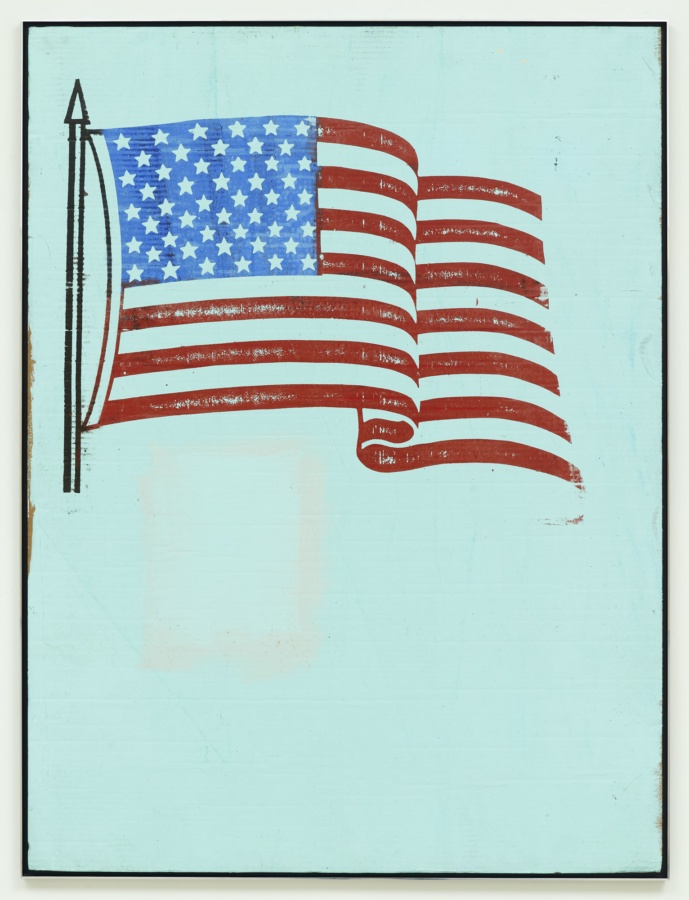January 27, 2020
Download as PDF
View on Provokr

Flag, 1992, Acrylic on cardboard, 48 × 36 inches, 48 ½ × 36 ½ inches (framed)
Many significant events took place in the United States in 1992. Jeffrey Dahmer was sentenced to life in prison, Jay Leno took over as the host of The Tonight Show, Southern California bore the brunt of many major earthquakes, and hurricanes hit the tropics of Hawaii and Florida. Additionally, Bill Clinton defeated incumbent George Bush in the presidential election, breaking a 12-year Republican grip on the White House. Just a few months before the election, protesters flooded the Republican National Convention, brandishing signs of protest. Among them was Mark Flood, supplying the crowd with signs of his own making.
A contemporary artist from Texas, Mark Flood has positioned himself as non-partisan and neutral individual in regards to politics. Yet, in 1992, after following the advice of fellow photographer George Hixson, he found himself on his way to creating an extremely political set of works.
Beginning with sections of cardboard, Flood used house paint as a primer to prevent distortion, before burning select images onto the cardboard canvases with the assistance of professional silk-screeners. Flood later used stencils to paint his words and messages upon the signs, resulting in the finished product: signs protesting the current conditions of the country.
Skeptical of America and those who dominated its spotlight, Flood fashioned his artwork to wear an air of defiant criticism. Some of the protest signs are blatant and unabashed in their critiques, while others err on the side of subtlety, requiring a more thorough inspection of motive. Those whose faces appear on Flood’s signs include George Bush Senior, Richard Nixon, and Arnold Schwarzenegger. Other signs portray the American flag or a still shot from the video of the brutal Rodney King beating.
As an artist who frequently worked on topics involving sex, drugs, and other taboo topics, Flood’s criticism of Republican principles were well founded. With phrases such as, “Free the rich,” “Bush is God,” and, “Be a narc,” the signs are unpolished, sarcastic, and brilliantly representative of the sentiments of the time. And although cynical in nature, Flood’s process of artistic creation was unifying in many ways. Throughout the stages of the process, Flood received help and guidance from many artistic acquaintances and friend. Ultimately it would result in profound act of protest, one of the highest privileges of the American people.



